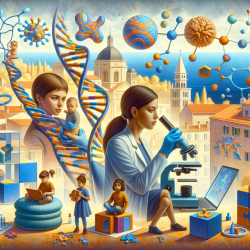Unlocking the Genetic Mysteries of Autism in Croatia: A New Frontier for Practitioners
In the realm of autism spectrum disorders (ASD), understanding the genetic underpinnings is crucial for developing effective interventions. The recent study titled "Population-based study of genetic variation in individuals with autism spectrum disorders from Croatia" provides groundbreaking insights that could revolutionize how practitioners approach therapy for individuals with ASD.
Key Findings from the Croatian Study
The study analyzed genetic data from 103 ASD subjects and 203 controls in Croatia, revealing significant genetic variations. Notably, the research highlighted a higher frequency of large chromosomal rearrangements and runs of homozygosity (ROHs) in individuals with ASD compared to controls. These findings suggest that genetic variations in isolated populations like Croatia can offer unique insights into ASD pathogenesis.
Implications for Practitioners
Practitioners can leverage these findings in several ways:
- Customized Interventions: Understanding specific genetic variations can help tailor interventions to individual needs, potentially improving outcomes for those with ASD.
- Enhanced Screening: Genetic screening in populations with known variations can lead to earlier and more accurate diagnoses, allowing for timely intervention.
- Collaborative Research: Practitioners are encouraged to collaborate with geneticists to further explore the implications of these findings and contribute to a broader understanding of ASD.
Encouraging Further Research
The Croatian study underscores the importance of examining genetic variations in diverse populations. Practitioners should advocate for and participate in research that explores genetic diversity in ASD, as this could uncover novel therapeutic targets and strategies.
Integrating Findings into Practice
For practitioners at TinyEYE and beyond, integrating these genetic insights into practice involves staying informed about ongoing research and being open to incorporating genetic data into therapy planning. This approach not only enhances the effectiveness of interventions but also positions practitioners at the forefront of innovative ASD therapy.
To read the original research paper, please follow this link: Population-based study of genetic variation in individuals with autism spectrum disorders from Croatia.










